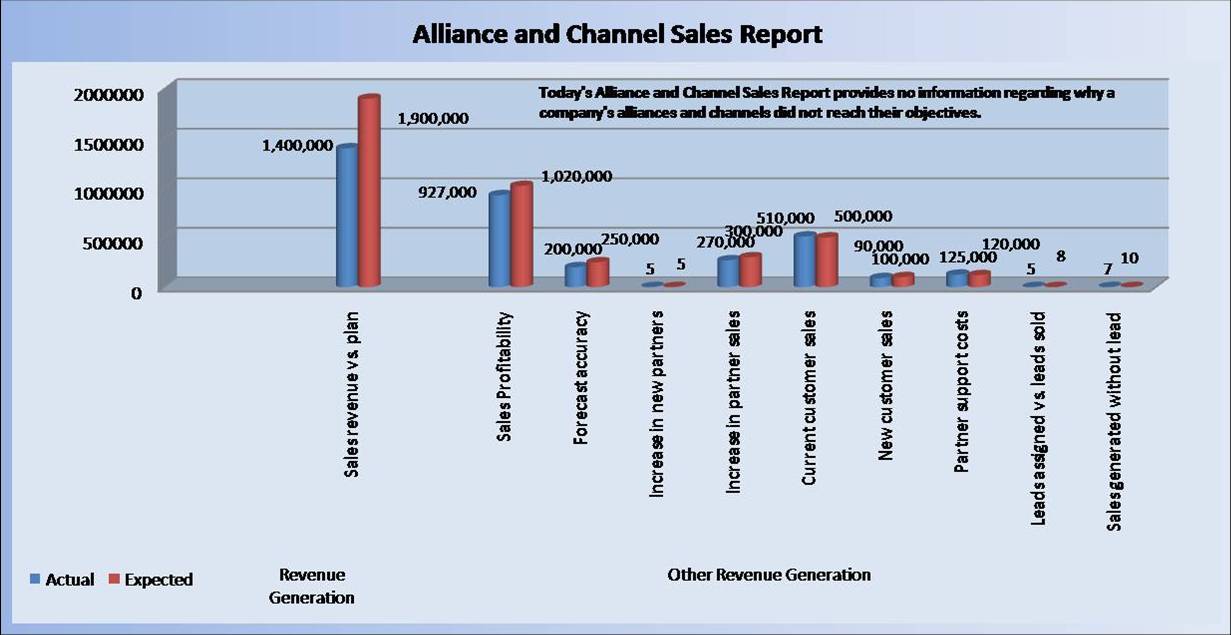
Alliances and
partnerships assist companies in increasing revenues, quickly
entering new markets, creating barriers of entry for competitors,
creating new products and markets, obtaining new customers and,
decreasing expenses related to sales, operations and manufacturing.
Alliance announcements in the press often make the price of a
company’s stock increase. Alliances and partnerships provide great
value.
Alliances also
come with a unique set of problems and risks. When a company is
dependent upon its alliances and partnerships as part of its ongoing
strategy to increase revenues and gain market share, it is dependent
upon forces that are outside of its direct control.
Today, there is
little data that can accurately reflect the state of a company’s
partnerships. Revenue forecasting, joint project deadlines, return
on partnership marketing and operational investments, and,
partnership related process change effectiveness to name a few, are
quite often difficult to substantiate, justify and measure because
there are so many variables to consider. Decisions regarding
partnerships are often made using the executive best guess strategy,
gut feel and, a limited amount of historical and market trend data.
It is difficult to consistently manage to objectives that are out of
one’s direct control. Influencing, driving and managing
indirect channels fall into this category. For the Technology
company Alliance and Channel Executive, it is part of a never ending
routine.
With the average company’s revenues from indirect channels expected
to reach 40% by 2010, the Alliance and Channel Executive has the need to make
better and faster partnering decisions in order to meet growing
revenue targets, control escalating expenses and maintain a
competitive advantage. Better and more quickly available causal
information is necessary in order to make these better and faster
partnering decisions.

Today, almost all companies have a version of the quarterly
Alliance and Channel Sales Report that is shown below. The report is made up
of revenue attainment against forecast along with several other
quantitative measurements.
Quarter of quarter comparisons are then made that yield
data that represents the effectiveness of the programs, processes,
policies and personnel that caused the results. Many future
partnering decisions are then based on the data.
Not
long ago, the report shown provided enough information to
effectively manage partnering programs. Partner consolidation,
partner collaboration and a rapidly changing competitive landscape
are adding to the need for more effective ways to grow revenue and
manage partners.
AllianceAnalytics Partner Value Optimizer has been specifically
developed to address the
growing challenges faced by the Alliance and Channel Executive.
To the point, Partner Value Optimizer™ captures, analyzes and presents all of the unstructured
causal data needed to determine the effectiveness of the partnering
processes, policies, personnel and programs and their individual and
combined impact on results.